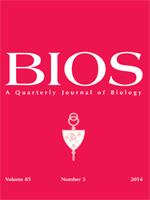Lead contamination in deer meat (venison) has been documented extensively throughout the past decade as a result of the use of lead ammunition in deer hunting. Bullets have been consistently documented to disintegrate into a cloud of fragments and contaminate venison. Many studies have shown that the consumption of lead-contaminated meat is directly correlated to increased blood lead concentrations that pose several human health risks; most of them are associated with neurological and renal disorders. It was hypothesized that there would be a higher lead concentration in rifle-harvested meat than archery-harvested meat primarily because archery arrows do not contain lead. In this experiment, meat samples from rifle-harvested deer and archery-harvested deer were analyzed for lead quantities using Inductively Coupled Plasma Mass Spectrometry (ICP-MS). Random samples were collected from local meat lockers as donations for this experiment. The data show no significant difference in lead levels (t=0.734; p=0.467) between rifle and archery harvested meat samples. Results of this study also point to lead contamination in some archery samples, as deer may survive lead bullet wounds and be killed by another means.
BioOne.org will be down briefly for maintenance on 12 February 2025 between 18:00-21:00 Pacific Time US. We apologize for any inconvenience.
How to translate text using browser tools
1 September 2014
A comparison between lead-containing (rifle) and non-lead containing (archery) hunting methods
Mackenzie J. Hemje,
John L. Kuehn,
Amy N. Morris
ACCESS THE FULL ARTICLE





